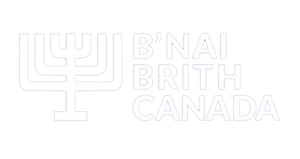
TORONTO – Last month, the Toronto Police Service released its hate crimes report for 2016, and as has been the case for over a decade, Jews remained the single most-targeted group. In fact, almost 30 per cent of all reported incidents were aimed towards members of the Jewish community.
This news has been met with different reactions. Toronto Sun columnist Sue-Ann Levy, for example, wrote that, “None of this surprises me in the slightest given the rise in antisemitism dressed in the guise of an anti-Israel, pro-BDS, pro-free speech movement.”
Others, however, have recommended that “Canadian antisemitism statistics should be taken with a pinch of salt.”
In an article in The Jewish Chronicle, columnist David Lazarus argues that although there are certainly “cut and dried” cases of antisemitism in Canada, “hate crimes stats are pretty broad, open-to-interpretation – and dubious.”
Lazarus claims that, because “certain Jewish organizations have a vested interest in creating the public impression that antisemitism in Canada is perpetually ‘on the rise,’” almost anything gets reported as a hate crime.
I’m not really sure where to start with this one.
Let’s go with the assertion that Jewish organizations (including, Lazarus says, B’nai Brith Canada) and their “community interests” impact the way hate crimes are reported. Of course, B’nai Brith releases its own Annual Audit of Antisemitic Incidents, but in his piece, Lazarus references the aforementioned Toronto Police report that deals specifically with hate crimes as defined by Canadian law. While B’nai Brith receives reports of antisemitism and can report such incidents to police, police services do not depend on B’nai Brith’s definition when deciding if they are hate crimes. Police services, of course, determine in their own way if such acts fit the legal definition of a hate crime.
To suggest that these numbers are skewed by Jewish organizations’ own interests is not only blatantly false, but perpetuates the antisemitic stereotype that governments, police services, and other bodies are all “controlled” by a Jewish or Zionist lobby.
Next, let’s analyze Lazarus’ claim that organizations like B’nai Brith have an interest in conveying higher rates of antisemitism. B’nai Brith speaks on behalf of the Jewish community in Canada, working to combat antisemitism, racism and prejudice. If the public is unaware of how widespread and deeply ingrained antisemitism is in the Canadian consciousness, then Canadians can and will do nothing to resolve it. So, yes, B’nai Brith benefits from making Canadians aware of antisemitism (in the sense of fulfilling its mandate), but not from exaggerating its prevalence. B’nai Brith’s goal is to improve the lives of Canadians (Jewish or otherwise), not to provoke unwarranted fear.
Lastly, I’d like to address Lazarus’ argument that frustrates me the most. He says, “So anything, in a way, can be seen and reported as a ‘hate crime’: from a swastika finger-painted in the snow by a stupid teenage kid to an idiot making a bigoted comment at a supermarket.” I fail to see why these shouldn’t be reported as antisemitic.
No, they might not meet the definition of a ‘hate crime’ under Canadian law (a fact that would be reflected in police statistics), but that doesn’t mean that antisemitic sentiment isn’t prevalent, and that it’s not dangerous. That “idiot making a bigoted comment” is just that – an idiot making a bigoted comment.
If a man makes an antisemitic slur to a Jewish woman at a supermarket, why should she just have to keep her head down and take it? Would you ask a black woman not to report it if that same man called her the n-word? And what if her children were with her? Now she has to explain to her children what the slur meant and try to help them come to terms with the fact that there are people in the world who hate them simply because of their religious beliefs.
And as far as a teenager drawing a swastika in the snow – well, you may have seen my own experience with this last January. Say you didn’t know who drew it, and you just saw the swastika – it’s quite easy to interpret that as a threat. I certainly did when a swastika was scrawled into the snow on the front lawn of my home.
Lazarus concludes that, “What is truly a hate crime seems too often open to interpretation and involves too many vested community interests to get a truly accurate picture of the reality on the ground.” But the truth is, the reality on the ground is life as it is experienced and interpreted by members of the Jewish community, which, sadly, is too frequently a life of snow-drawn swastikas and bigoted comments in the supermarket.
Sara McCleary has written extensively on a wide range of topics while working as a news reporter and freelancer. She has also completed a master’s degree in history, and further graduate work in interdisciplinary humanities.


